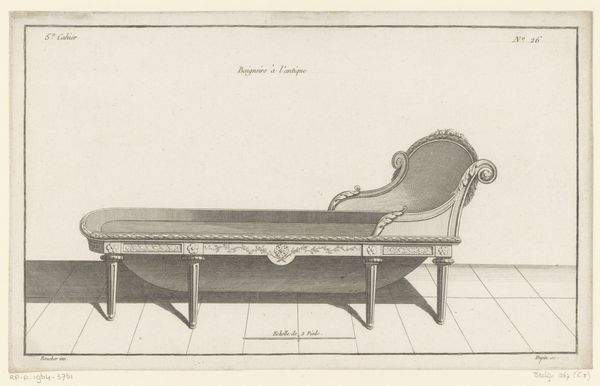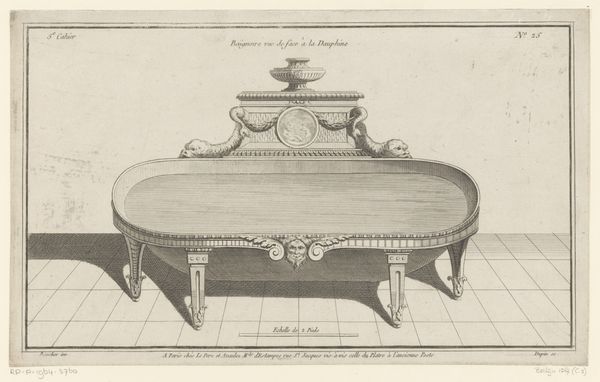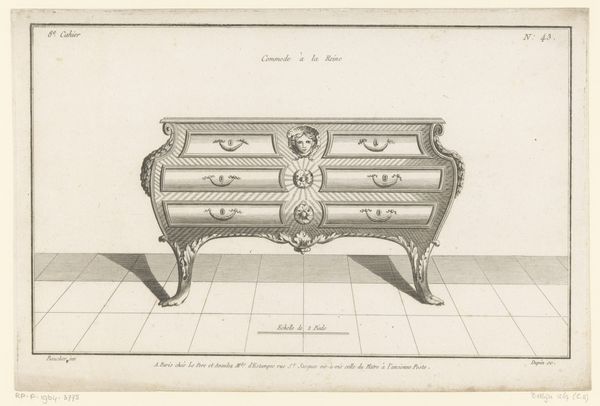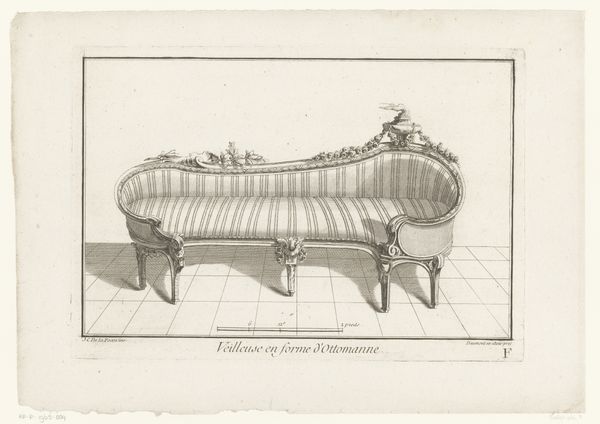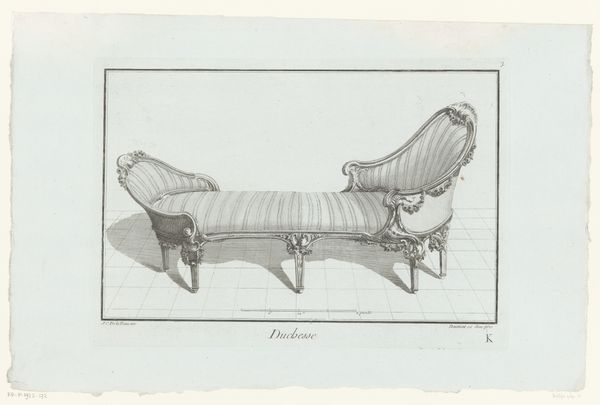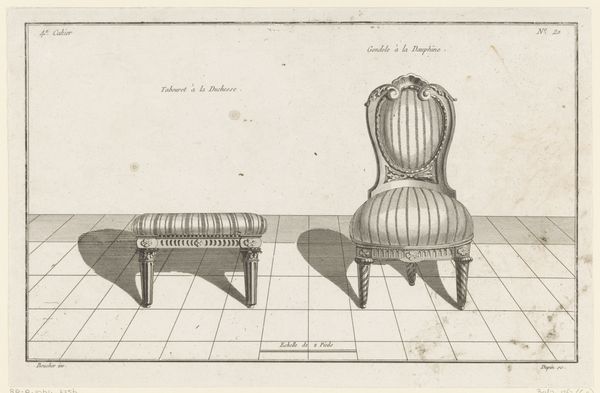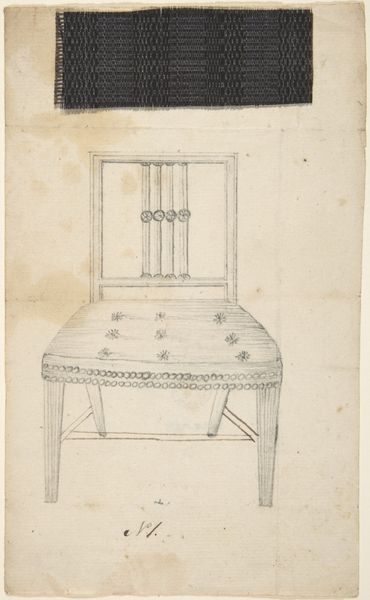
drawing, print, engraving, architecture
#
drawing
#
neoclacissism
# print
#
engraving
#
architecture
Dimensions: height 202 mm, width 328 mm
Copyright: Rijks Museum: Open Domain
Curator: Here we have Nicolas Dupin’s “Bad met rugleuning,” or “Bath with backrest,” an engraving dating from the period of 1772 to 1779. Editor: My initial thought? It seems incredibly austere for something meant for leisure and comfort! Curator: It does possess that certain Neoclassical formality. This print isn't just a picture of a bathtub; it's a representation of a specific ideal of refined living during that era. Consider the status associated with personal hygiene. Editor: Exactly. It’s also worth considering how it would have been manufactured. Someone designed this. How would the design translate into woodwork and potentially plumbing? Who were the craftsmen involved? I bet this was a whole supply chain of specialized labour. Curator: Absolutely. The design itself, replicated through printmaking, speaks to the rise of a design culture where such luxury items became desirable status symbols within a certain societal class. We can assume these items were circulated and became highly sought after amongst wealthy individuals. Editor: And were those wealthy individuals concerned about the bath's form more than its actual function? Is the function merely to display wealth? I wonder about the relationship between utility and aesthetics. Curator: It is a dialogue between functionality and visual display, where luxury and status played essential roles in 18th-century European material culture. Editor: Yes! And, speaking of materials, what kind of wood? What type of finish? Those details, or the means of their construction, aren’t shown in this engraving. And that interests me more than how “classy” this tub design appears to be. Curator: I concede your points on materiality. And for me, this reminds us that art serves not only aesthetic but also crucial historical purposes. Editor: Precisely. It's amazing how looking at one item, the way something is made or consumed can open up so many different avenues of inquiry and discussion!
Comments
No comments
Be the first to comment and join the conversation on the ultimate creative platform.
